I'm not talking Halloween festivities. It's time you learned what sight fishing Louisiana redfish is all about.
What is the Pumpkin Patch?
It is not a name for a specific body of water, so don't bother looking for it on a map.
The term instead describes any body of water that is shallow, has aquatic grass and a lot of hungry redfish swimming around.
These redfish become more "golden" in color than their saltwater cousins. They are quite literally the same color as a pumpkin seen during Halloween.
What makes the Pumpkin Patch so great?
Describing why is difficult. I can only say sight fishing redfish is like discovering the thrill of fishing all over again.
It's a completely different experience that leaves you wanting more.
The Pumpkin Patch demands angling skill not found chunking corks against shorelines.
This higher tier of fishing will make you a better angler when you ditch the live shrimp and learn how to work artificial lures through grass.
Of course, there are a ton of redfish to be caught!
Why do redfish love the Pumpkin Patch?
Redfish just want to be comfortable and have something to eat. The Patch is a perfect home for pumpkins.
Clean Water
Aquatic grass cleans water to make it crystal clear. Different kinds of aquatic grass (i.e. hydrilla, widgeon and eel grass) work to filter water as the tide pulls it through.
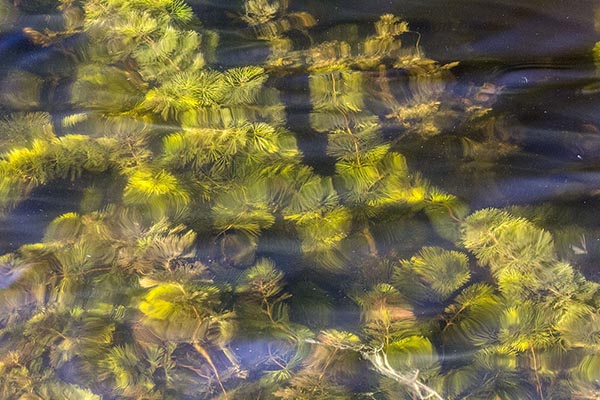
Aquatic grass cleans water and provides cover for bait, giving them a place to grow in numbers.
Any denizen of the marsh enjoys clean water because it's easier on their gills. A fish breathing in muddy water is similar to you trying to breathe the smoke of a house fire.
Fish hate dirty water and will leave to find cleaner water.
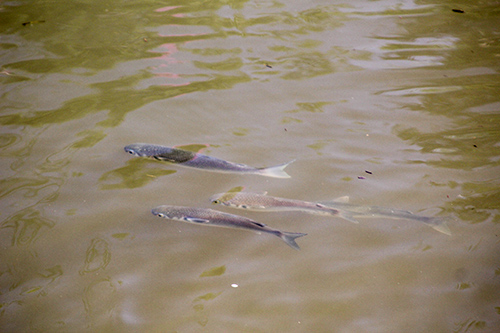
Mullet like this are common in the Pumpkin Patch. So are blue crabs, shad and shrimp.
Pumpkin Patches are filled with a variety of baitfish not found anywhere else:
- small blue crab
- crawfish
- shrimp
- pogies
- mullet
- baby bass
- bluegill
- the list goes on
It is easy to see why redfish, being partial to shallow water, will enter these ponds to gorge themselves.
Redfish also use aquatic grass as cover. I have watched them hide inside grass upon being released from the boat.
How does one find the Pumpkin Patch?
Pumpkin Patches are best found in areas with lower salinities and even completely fresh water.
These areas can be found near fresh water sources like the Mississippi River. I can't give you exact salinity levels because I never measured them and, quite frankly, they are not needed.
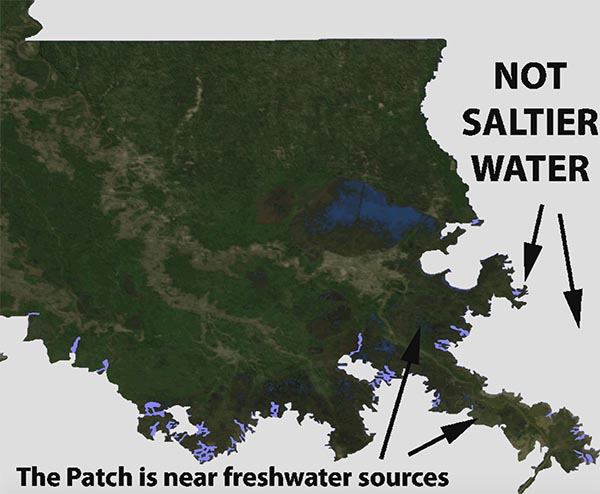
Places like Grand Isle are too salty for aquatic grasses to thrive, but if you look at freshwater sources like Caernarvon then you are right on the money.
In a nutshell, Patches are to be found in places like Delacroix, Chef Pass, Lafitte and Dularge.
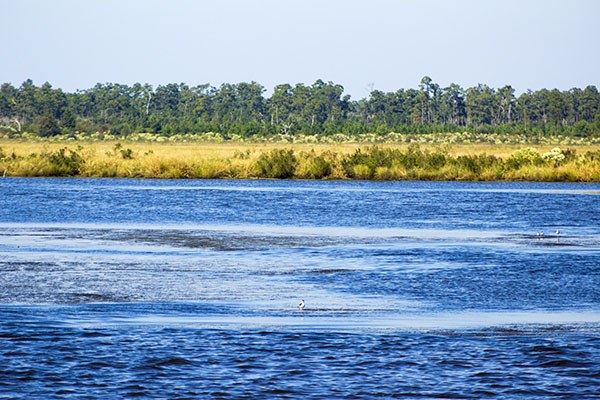
You will see mats of grass from your boat if you are in the right area.
It is common to catch redfish alongside freshwater species like largemouth bass. A lot of ponds I enjoy are laden with alligators, turtles, bluegill and any wildlife that draws closer to freshwater.
This doesn't mean redfish aren't found in saltier marsh. They are found there in numbers!
It's only fresher areas that grow enough aquatic grass to clean water and grow bait.
What kind of boat do you need?
I have fished the Patch in a variety of boats ranging from tricked-out 24ft bays, to Florida and Texas style flats boat, and small aluminum flatboats with no amenities at all.
Today, I use a 16ft aluminum flatboat drafting six inches, built strictly for sight fishing redfish!
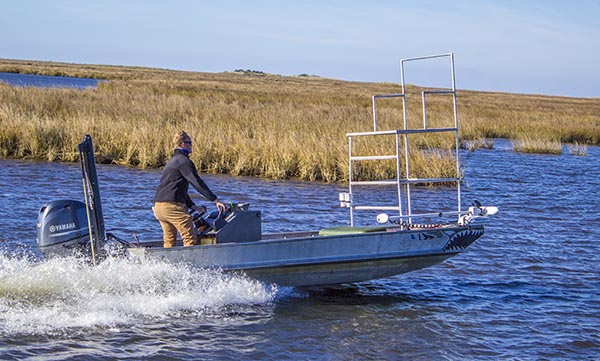
A simple aluminum hull with all the amenities kicks ass for sight fishing.
I don't think you need something drafting that shallow to successfully fish the Patch. But you do need something that can get in and out of two feet with ease.
Besides, you need roughly 15" of water to run a trolling motor.
After that sinks in, read this:
Knowledge Bomb
I've heard anglers say they can't chase redfish because their bay boats draft too much.
This is bullsh*t.
If you don't believe me, consider what Elite Redfish Series anglers use.
Otherwise, enjoy this list:
- Shane Dubose - Skeeter ZX 24 bay
- Chad Billiot - Blazer 2420 GTS
- Mike Frenette - Triton 240 LTS
- Lee Daughdrill - 24' Haynie HO
- the list goes on
Get it? A super skinny drafting boat is not necessary to sight fish pumpkins.
You. Don't. Need. It.
What fishing tackle and gear should you use?
I'm sharing my setup to give you an idea where to start so you can make an informed decision. There is no need for super expensive gear.
The best investment you can make is practice. Get started with something affordable to practice casting and learn what is good for you, then drop the dollars on nicer gear.
Rod & Reel
I fish a Daiwa Aird-X 7'3" medium-heavy power, fast action casting rod paired with a Daiwa Tatula 150.
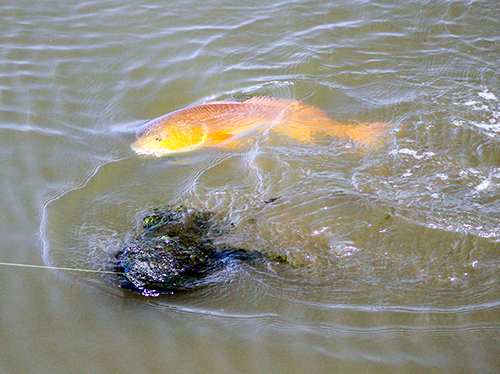
In the Patch you will find yourself pulling redfish through clumps of thick grass. We use a strong braided line like FINS specifically for this purpose.
Polarized Lenses
Anything from your local tackle store will work.
I have found Costa del Mar Blackfins in 580G with a green mirror lens works best for me.
You should start out with an inexpensive pair of polarized sunglasses and then purchase higher-quality lenses as you gain experience and learn what you like and dislike.
Lures Redfish Love
Q: What do redfish eat?
A: Whatever fits in their mouth.
There is a wide selection of lures to catch redfish with. Here are a handful I like to use:
Sometimes I will throw a straight 1/4 oz jighead with a Matrix Shad on it.
I also toss a Net Bait Baby Paca Craw threaded onto a 1/4oz Flashy Swimmer. It's a swim hook with an underspin. Redfish pretty much go crazy for it.
Other days I throw a weedless gold spoon or spinnerbait. It really depends on how redfish are behaving, which I cover in the next section.
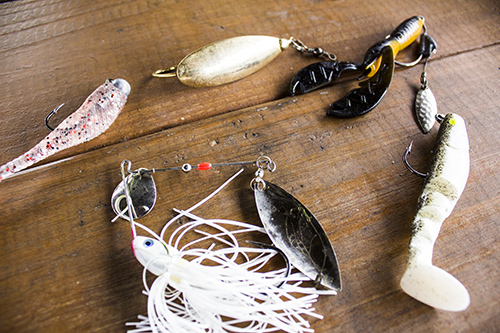
Clockwise from top left: Matrix Shad, Gold Spoon, Net Bait Baby Paca Craw on Flashy Swimmer, Mambo Mullet and Booyah Spinnerbait
How do I catch pumpkins in the Pumpkin Patch?
With the right gear and a little casting practice you'll be prepared to raid the Pumpkin Patch.
But, before you do, lets cover some things to make that learning curve a little easier.
Casting
The video illustrates an excellent sight cast:
Casting past him to bring the bait across his field of view perpendicular to his direction of travel.
There are things you don't want to do, like cast on top of him. He will run scared. Nor do you want to cast in front of the redfish and swim the bait directly at his face.
Redfish are not accustomed to prey charging them, no more than you are to having food fly off your plate and smack your face.
You really don't want to cast behind the redfish because he may not see the lure at all! Even worse, your line could rub against his body and spook him, causing him to dart across the pond to safety.
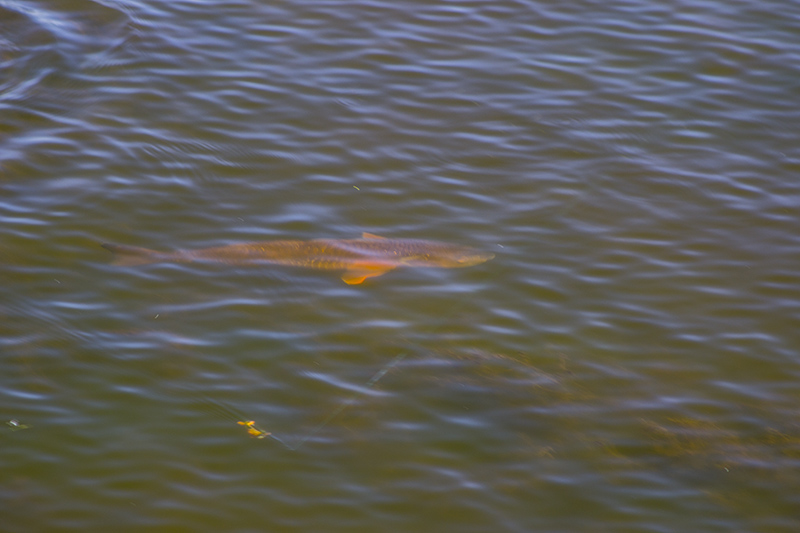
The redfish changed direction after the cast was made, causing the lure to fall behind him. He did not see it so another cast in front of him got him to bite.
There are times you will encounter redfish ready to eat anything presented in any way to them. Cherish those days.
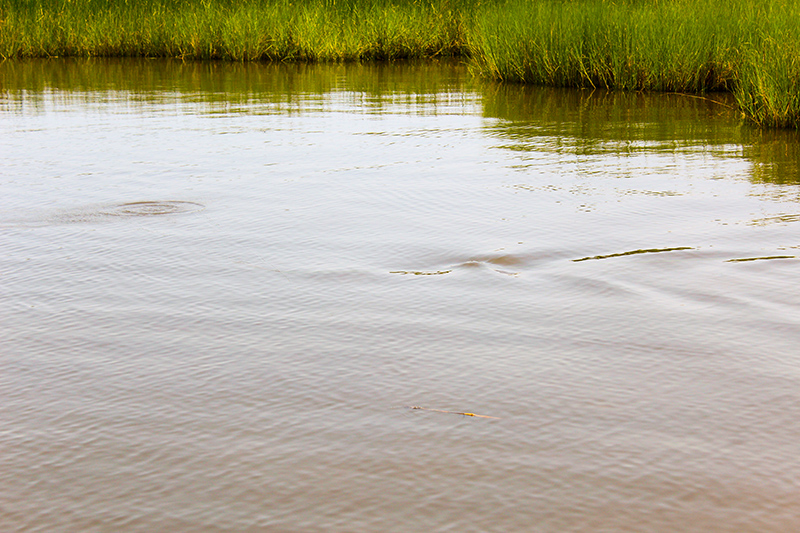
The redfish is not so easy to see, but the water pushing around him is. Mike made a cast in an attempt to intercept the fish.
Maintain a Low Signature
By "low signature" I mean being quiet and minimizing body movement when elevated.
Redfish used to be very small and fell prey to birds like ospreys and great blue herons. They instinctively run from anything big moving above them.
Pointing at redfish and screaming "thar she blows" is guaranteed to spook them.
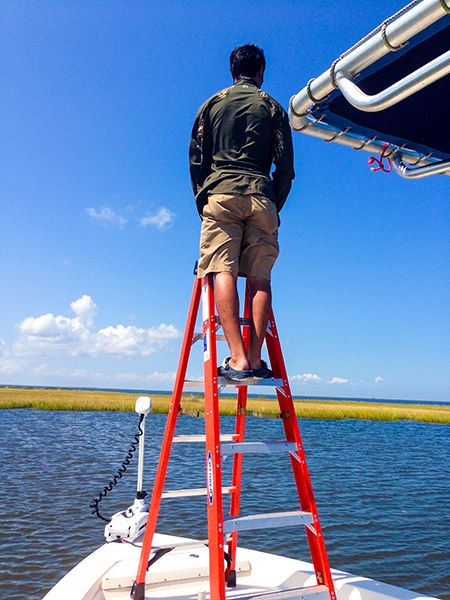
Redfish can see you, too. Don't wave around a lot and be as still as possible so you don't spook the redfish.
Trolling motors should be used sparingly. Use the wind to push you across a pond when it's available. Never go against the wind! This will drain your trolling motor battery as you use more power to fight the wind.
There is no reason to go fast across a pond. Slow down and take your time to observe in 360 degrees. This way you avoid literally running redfish over.
If you're quiet, redfish won't be on edge and will be ready to eat.
I have also learned that it is not steady noise, but changes in noise that spook redfish the most.
If you see a redfish close to the boat don't turn the trolling motor off. Instead, make the best possible cast. Otherwise he might disappear as soon as that trolling motor turns off.
I am still experimenting but this has been my experience.
Spooky Redfish
Sometimes redfish run at the slightest disturbance. These redfish are characterized as being "spooky" because they are easily scared by noise, motion or a bright and flashy lure.
Example
One day I started out with a white spinnerbait.
As soon as my intended redfish saw it he took off across the pond.
When I see this happen with a few reds (and it is obvious there is a pattern) I switch to a darker lure that has no spinners on it.
Sometimes that doesn't work. In that case, I will throw a Berkley Gulp Shrimp at them.
Berkley Gulp Alive baits have a strong scent that makes the difference in redfish "short striking" the lure and completely inhaling it.
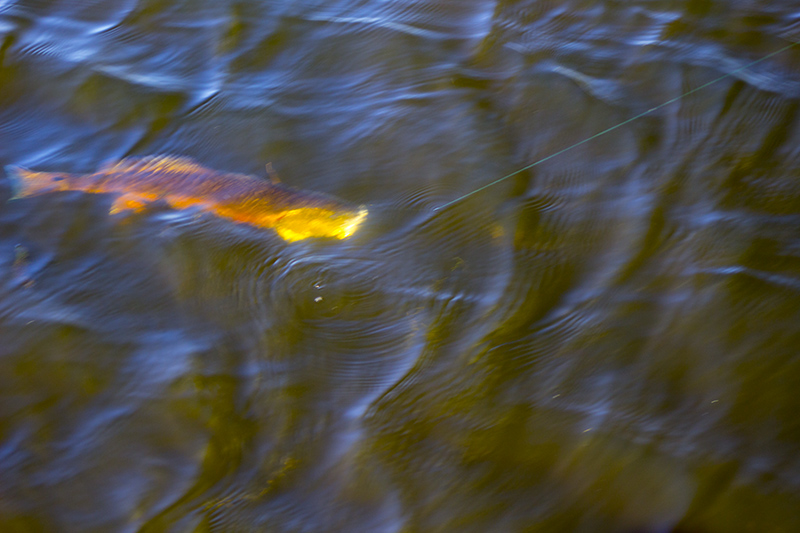
Watching a redfish flare her gills and inhale a perfectly presented lure is very rewarding!
Summary
Sight fishing redfish has made me a substantially better angler. My casting ability has improved significantly and now I understand what is going on underwater.
I put out some great information here, but I have even more in Sight Fishing Mastery School. I cover important skills like using satellite imagery to locate clean water, where redfish are swimming and how to approach them.
There is a lot more, so be sure to check it out. It will save you a lot of money and get you to the good stuff!
